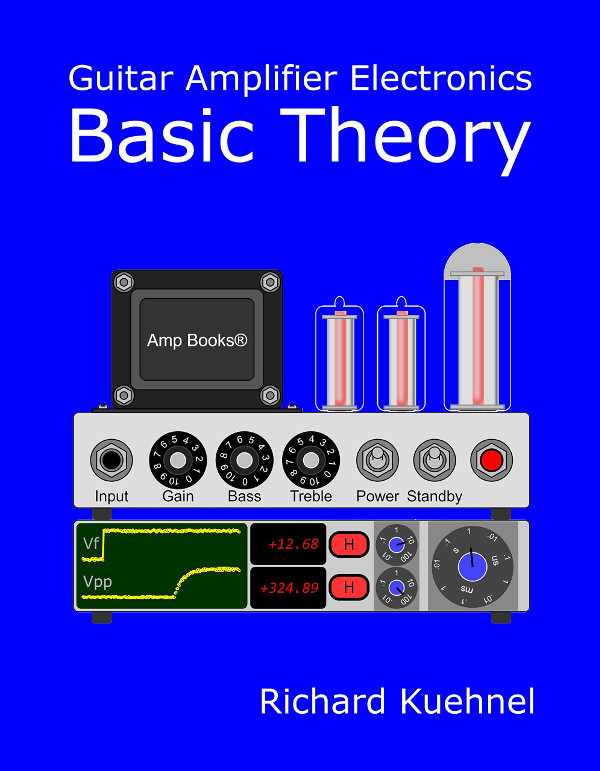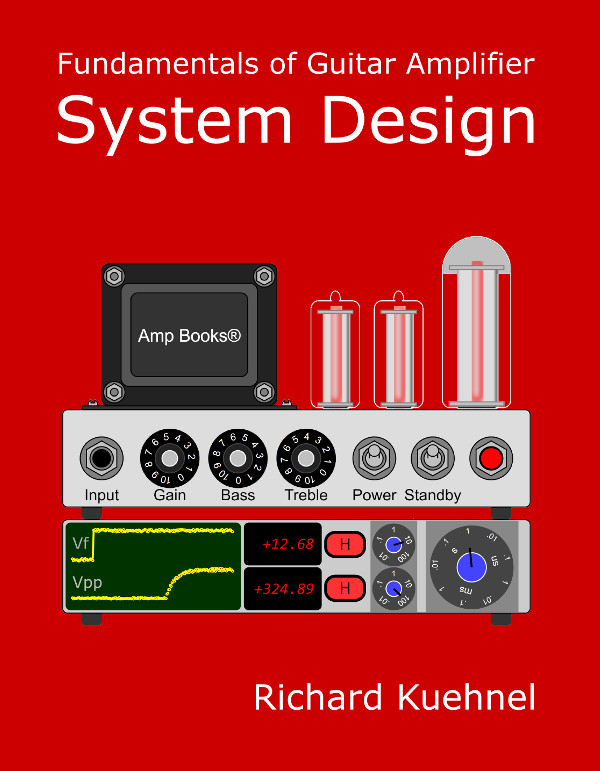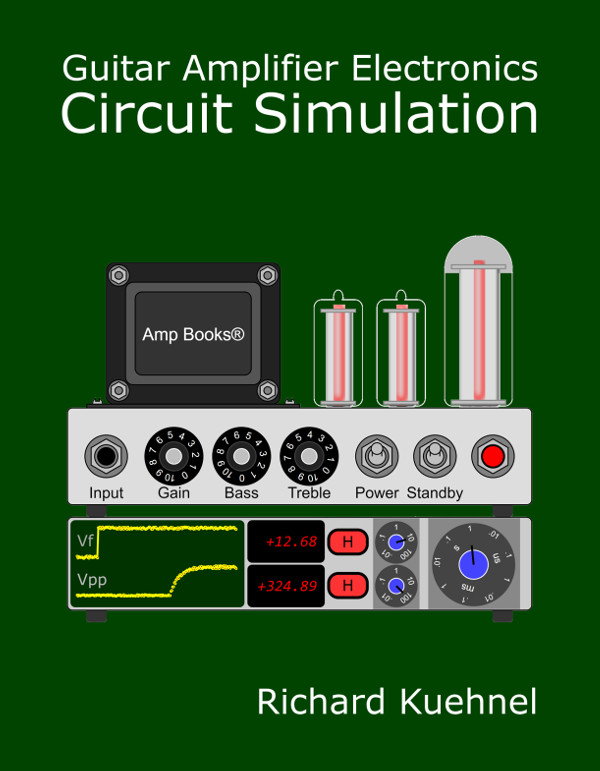 Fender designed the Bassman in 1952 to be an amplifier for its new Precision Bass.
The amp had a 15-inch speaker with a closed back and used a pair of 5881 beam power tetrodes for lots of volume.
Fender designed the Bassman in 1952 to be an amplifier for its new Precision Bass.
The amp had a 15-inch speaker with a closed back and used a pair of 5881 beam power tetrodes for lots of volume.
 Throughout the decade it would be modified and improved until culminating in the model 5F6-A.
Throughout the decade it would be modified and improved until culminating in the model 5F6-A.
Ironically it didn't quite make it as a bass amp, but the musical tones it created from a guitar made history.
The Bassman's long-tailed-pair phase inverter with negative feedback became the foundation for many great rock and blues sounds.
 Many other amplifier manufacturers created new Bassman-derived designs that themselves became the legendary instruments of a rock generation.
For more than half a century the 5F6-A circuit has been tweaked, enhanced, and re-introduced under many different logos,
and the late-1950's original has become one of the most iconic guitar amplifiers of all time.
Many other amplifier manufacturers created new Bassman-derived designs that themselves became the legendary instruments of a rock generation.
For more than half a century the 5F6-A circuit has been tweaked, enhanced, and re-introduced under many different logos,
and the late-1950's original has become one of the most iconic guitar amplifiers of all time.
Fender's product line represents a master class in evolutionary design.
For this reason, we begin our circuit exploration with the TV front and wide panel 5B6.
We also examine the narrow panel 5E6, 5E6-A, and 5F6, because they are major milestones in the evolutionary development of the 5F6-A.
With each model we explain system design concepts,
the motivations underlying design changes,
stage-by-stage circuit operation,
and overall system performance.
Analysis includes a stage-by-stage profile of audio signal levels,
system voicing, harmonic distortion, intermodulation distortion, and overdrive dynamics.
Richard Kuehnel
is a member of the Circuits and Systems Society of the Institute of Electrical and Electronic Engineers.



| |
 |
 |
 |
 |
 |
 |
| Mastering Basic Electronics |
✓ |
|
|
|
|
|
| Preamps and Tone Stacks |
✓ |
✓ |
✓ |
✓ |
✓ |
✓ |
| Power Amps and Negative Feedback |
✓ |
✓ |
✓ |
✓ |
✓ |
✓ |
| Power Supplies |
✓ |
✓ |
✓ |
✓ |
✓ |
✓ |
| DC-Coupled Cathode Followers |
✓ |
✓ |
|
|
✓ |
✓ |
| Effects Loops |
|
✓ |
|
|
|
✓ |
| Reverb and Tremolo |
|
|
|
✓ |
|
|
| |
 |
 |
 |
 |
 |
 |
| Crafting a Complete Architecture |
|
✓ |
|
|
|
|
| Testing Overdrive Dynamics |
|
|
✓ |
|
|
|
| Measuring Distortion |
|
|
✓ |
✓ |
✓ |
✓ |
Introduction
Warning: High Voltage!...1
The Ultimate Tone Machine...1
Evolutionary Design...1
Acknowledgements...4
Chapter 1: Heritage - TV Front and Wide Panel 5B6
Basic Architecture...6
System Design Concept...6
Push-Pull Power Amp...9
Power Supply...11
6SL7 Paraphase Phase Inverter...15
Global Negative Feedback...19
How Negative Feedback Reduces Distortion...22
Feedback Calculations for the 5B6...22
Volume and Tone Controls...26
6SC7 Preamp...29
System Profile...32
System Voicing...34
Chapter 2: Model 5E6 and 5E6-A Narrow Panels
System Design Concept...37
Coaxing More Power from the Power Amp...41
Parallel 5U4 Power Supply...46
A New Voltage Amplifier and Split-Load Phase Inverter...49
Voltage Amplifier Performance...50
Phase Inverter Performance...51
Global Negative Feedback...53
Closed-Loop Gain...54
Adding a Presence Control...56
New Tone Controls...58
Second-Stage Negative Feedback...63
The Feedback Loop...64
Input Network Gain...65
Voltage Amp and Cathode Follower Gains...66
Feedback Gain...66
Closed-Loop Gain...68
Circuit Refactoring?...68
Bright Channel Response...70
Second-Stage Headroom...70
Cathode Follower DC Coupling...72
First-Stage Preamp...73
System Profile...77
System Voicing...79
5E6-A Modifications...79
Coaxing Even More Power from the Power Amp...81
Power Amp Performance...82
Tone Control Modifications...83
System Profile and System Voicing...84
Some Perspective Please!...86
Chapter 3: Model 5F6 Narrow Panel
System Design Concept...87
Power Amp Performance...90
Power Supply Performance...93
Introducing a Long-Tailed-Pair Phase Inverter...98
Tone Stack and Global Negative Feedback...102
Second-Stage Performance...104
Headroom...104
Cathode Follower DC Coupling...105
And the Rest is History!...107
Bright and Normal Volume Controls...108
A New, Iconic Front End...109
System Profile...113
System Voicing...115
Chapter 4: Model 5F6-A Narrow Panel
System Design Concept...117
Power Amp Grid Stoppers - Removed!...119
Power Amp Performance...120
Power Supply Performance...122
Phase Inverter Modifications...123
Global Negative Feedback...125
The Presence Control...128
The Fender Bassman Tone Stack...129
How the Stack Works...130
Tweed Bassman versus Twin Reverb...133
Negative Feedback from Cathode Degeneration...134
System Sensitivity...135
Second-Stage Headroom...135
Substituting a 12AX7 for the First-Stage 12AY7...137
System Profile...139
System Voicing...141
Full Power Performance...142
Harmonic Distortion at Full Power...144
Intermodulation Distortion (IMD)...148
Overdrive Dynamics...150
Feedback Effects...150
Bias Excursion...151
Power Supply Sag...152
Some Final Words on the Fender Bassman 5F6-A...155
Appendix: Decibel-Volts (dBV)...157
Index...158

 Fender designed the Bassman in 1952 to be an amplifier for its new Precision Bass.
The amp had a 15-inch speaker with a closed back and used a pair of 5881 beam power tetrodes for lots of volume.
Fender designed the Bassman in 1952 to be an amplifier for its new Precision Bass.
The amp had a 15-inch speaker with a closed back and used a pair of 5881 beam power tetrodes for lots of volume.
 Throughout the decade it would be modified and improved until culminating in the model 5F6-A.
Throughout the decade it would be modified and improved until culminating in the model 5F6-A.
 Many other amplifier manufacturers created new Bassman-derived designs that themselves became the legendary instruments of a rock generation.
For more than half a century the 5F6-A circuit has been tweaked, enhanced, and re-introduced under many different logos,
and the late-1950's original has become one of the most iconic guitar amplifiers of all time.
Many other amplifier manufacturers created new Bassman-derived designs that themselves became the legendary instruments of a rock generation.
For more than half a century the 5F6-A circuit has been tweaked, enhanced, and re-introduced under many different logos,
and the late-1950's original has become one of the most iconic guitar amplifiers of all time.








